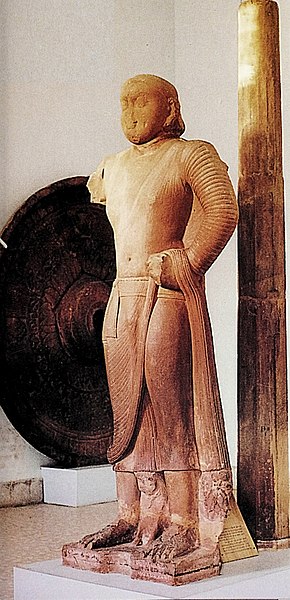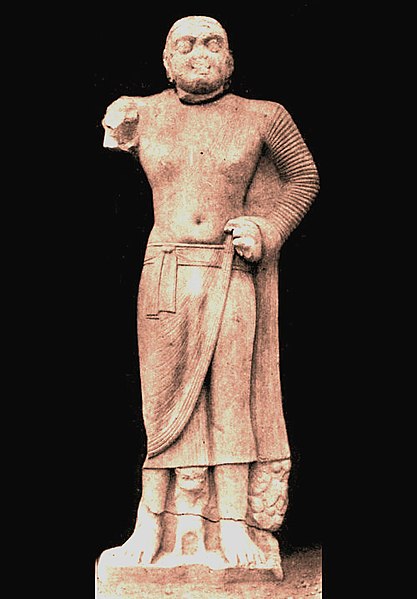The Bala Bodhisattva is an ancient Indian statue of a Bodhisattva, found in 1904–1905 by German archaeologist F.O. Oertel (1862–1942) in Sarnath, India. The statue has been decisive in matching the reign of Kanishka with contemporary sculptural style, especially the type of similar sculptures from Mathura, as its bears a dated inscription in his name. This statue is in all probability a product of the art of Mathura, which was then transported to the Ganges region.
The Bala Bodhisattva with shaft and chatra umbrella, dedicated in "the year 3 of Kanishka" (circa 123 CE) by "brother (Bhikshu) Bala". The right arm would have been raised in a salutation gesture. Sarnath Museum.
The remaining inscriptions, at the front and back of the base of the Bala Bodhisattva statue.
Front and back views of the Bala Bodhisattva.
Frontal view
Sarnath is a place located 10 kilometres northeast of Varanasi, near the confluence of the Ganges and the Varuna rivers in Uttar Pradesh, India.
View of Sarnath, looking from the ruins of the ancient Mulagandha Kuty Vihara towards the Dhamek Stupa
Friedrich Oertel's plan of excavation. The lion capital was found in 1905 to the west of the main shrine, which is to the north of the "Jagat Singh" stupa.
Buddhist monk in Sarnath
Sarnath Jain Tirth








